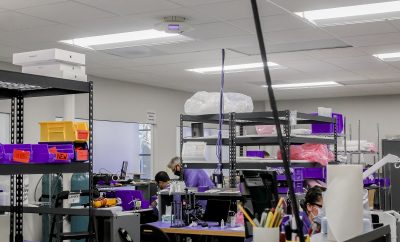
News
Antibiotic-Resistant Bacteria Posing Major Problems in US Hospitals
In recent years, the emergence of antibiotic-resistant organisms have become a severe public health concern, especially in hospitals. These antibiotic-resistant organisms have been seen to cause life threatening infections that cannot be treated by conventional antibiotics usually used to save people from infection. Due to this, these infections have been proving to be fatal in many cases. This is coming at a time when the discovery and development of new anti-infective medicines are slowing down. This has been the cause of major concern, as it is could potentially see hospitals faced with a growing number of potentially untreatable infections.
 This antibiotic resistance happens rapidly, and is tough to pinpoint the exact time it occurs. Bacteria multiply rapidly, and within 24 hours, a single bacteria can become 4,722,366,482,869,645,213,696 bacteria. For those that don’t even know where to begin in pronouncing that, well, it starts with ‘sextillion’, and is followed by several more numbers you most likely have never heard of. During this multiplying stage, genetic mutations occur. Some of these mutations will give the bacteria adaptable advantages that can make it resistant to antibiotics. These bacteria will continue to live and multiply, and will eventually become more commonly seen.
This antibiotic resistance happens rapidly, and is tough to pinpoint the exact time it occurs. Bacteria multiply rapidly, and within 24 hours, a single bacteria can become 4,722,366,482,869,645,213,696 bacteria. For those that don’t even know where to begin in pronouncing that, well, it starts with ‘sextillion’, and is followed by several more numbers you most likely have never heard of. During this multiplying stage, genetic mutations occur. Some of these mutations will give the bacteria adaptable advantages that can make it resistant to antibiotics. These bacteria will continue to live and multiply, and will eventually become more commonly seen.
The most widely seen super bug goes by the name of CRE, which is usually a common bacteria found in human intestines. The bacteria doesn’t usually cause disease, but in the event that the bacteria spread outside the body, it can infect wounds, cause urinary tract infections, blood infections, and pneumonia. The bacteria can also spread from person to person through contact with infected people or through contaminated medical devices. By the year 2050, antibiotic-resistant bacteria could potentially cause 10 million or more deaths.
 Super bugs are becoming a real problem in hospital settings due to the high chances of them being found there. The CDC estimates that one in seven hospitals have suffered from their medical devices becoming contaminated with one of several antibiotic-resistant bacteria. This becomes even more prevalent in long-term healthcare facilities that deal with older or terminally-ill patients, due to prolonged use of medical devices.
Super bugs are becoming a real problem in hospital settings due to the high chances of them being found there. The CDC estimates that one in seven hospitals have suffered from their medical devices becoming contaminated with one of several antibiotic-resistant bacteria. This becomes even more prevalent in long-term healthcare facilities that deal with older or terminally-ill patients, due to prolonged use of medical devices.
Currently, scientists are working on developing the tools to fight these super bugs, but they are still far-off from becoming the ultimate weapon. Researchers at MIT are working on using a method they developed to infect the bacteria with special DNA molecules called ‘plasmids’, which work by overloading the bacteria with new cells, which causes it to burst. While there is yet to be a definitive tool in combating these super bugs, scientists have identified the great need for one, and researchers are exploring all avenues.
In the meantime, the best thing you can do to protect yourself from these superbugs is to not get infected in the first place. While this sounds easier said than done, it all boils down to being vigilant. If you have been hospitalized recently, make sure to notify your doctor, so they can monitor you for any potential infection. Make sure your healthcare providers practice extreme hygiene when working with you, in addition to keeping your hands clean at all times.





2 Comments